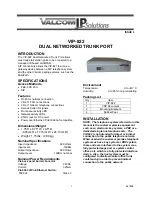
Chapter 5
Generated Code Architecture
5-18
ni.com
Extended Procedure Information Structure
The
-epi
option specifies that additional elements to all standard
procedure SuperBlock’s
info
structure are to be generated. Currently,
only one additional element is generated. It is named
caller_id
and is of
type
RT_INTEGER
. Example 5-2 and Example 5-3 show an
info
structure
declaration (in C) with and without the
-epi
option. Equivalent structures
are declared when generating Ada code.
Example 5-2
Regular Procedure
info
Structure Declaration
struct _proc1_info {
RT_INTEGER iinfo[5];
RT_FLOAT rinfo[5];
};
Example 5-3
Extended Procedure
info
Structure Declaration (
-epi
)
struct _proc1_info {
RT_INTEGER iinfo[5];
RT_FLOAT rinfo[5];
RT_INTEGER caller_id;
};
Caller Identification
The purpose of the
caller_id
element is to provide the unique identifier
of the caller, that is, the number of the subsystem task, background, startup,
or interrupt procedure SuperBlock. As implied in Example 5-2 and
Example 5-3, all subsystem tasks and nonstandard procedure SuperBlocks
are assigned a unique identifier. Starting with 1, the tasks and procedures
are numbered in this order: subsystem tasks, startup procedures,
background procedures, and interrupt procedures.
Startup procedures are unlike the other procedures in that they are called
only once during the startup phase. Consequently, it has been shown that
easy identification of when a startup SuperBlock is referenced in the
caller_id
element simplifies template programming and code
generation. Therefore, startup SuperBlocks are represented as the
negative
of the ordering number. For example, assume a model has three subsystem
tasks, three startup procedure SuperBlocks, two background procedure
SuperBlocks, and one interrupt procedure SuperBlock. The ordering is
shown in Table 5-1.
















































